
food and drink. shopping
.pdf«Сибирский государственный индустриальный университет»
Кафедра иностранных языков
FOOD AND DRINK. SHOPPING
Методические указания по организации практических занятий
и самостоятельной работы студентов 1 курса, изучающих английский язык
Новокузнецк
2012
3
ББК 81.2 Англ – 9 F74
Рецензент кафедра иностранных языков НФИ КемГУ
(зав. кафедрой к. пед. н., доцент Н.В.Падеро)
F74 Food and Drink. Shopping : метод. указ. / Сиб. гос.
индустр. ун т ; сост. : В.Е. Тарасенко [и др.]. – Новокузнецк : Изд. центр СибГИУ, 2012. – 26 с.
Представлены два раздела. Первый раздел содержит разработку четырех уроков. Второй раздел содержит материал для самостоятель ной работы студентов по данной теме.
Предназначены для студентов 1 курса, изучающих английский язык.
4
СОДЕРЖАНИЕ |
|
Введение .............................................................................................. |
3 |
Lesson 1 ................................................................................................. |
4 |
Lesson 2 ................................................................................................. |
8 |
Lesson 3 .............................................................................................. |
11 |
Lesson 4 .............................................................................................. |
14 |
Independent Work ......................................................................... |
17 |
Библиографический список .................................................. |
24 |
5
ВВЕДЕНИЕ
Данные методические указания разработаны в соответствии с Программой учебной дисциплины «Иностранный язык», принятой в Сибирском государственном индустриальном университете на основе ФГОС для бакалавров неязыковых направлений подготовки.
Основная цель этих методических указаний – помочь преподавателям организовать практические занятия коммуникативной направленности по теме “Food and Drink. Shopping”.
На практические занятия по вышеуказанной теме, согласно учебному плану, выделено восемь часов (занятия 6 – 9) в первом семестре.
Основная задача занятий коммуникативной направленности – сосредоточение внимания на теме и на ситуациях, максимально приближенных к реальной жизни. Грамматика даётся небольшими дозами по мере необходимости и закрепляется на практике в контексте изучаемой темы. У студентов должно появляться ощущение практической необходимости и пользы изучения иностранного языка. Авторами разработан подробный план проведения занятий, подкреплённый методическими материалами.
Самостоятельная работа студентов по теме включает следующие виды работы:
•контрольно-тренировочные упражнения для закрепления грамматического материала,
•три текста для внеаудиторного чтения общим объёмом 3556 печатных знаков,
•подготовку к ролевым играм “At the restaurant” и “At the shop”, которые предполагается проводить на занятиях.
Преподавателям рекомендуется давать студентам материалы из данного раздела в качестве домашнего задания.
Авторы желают успехов в освоении темы и выражают надежду, что данные методические указания помогут в этом.
Уроки 1 – 3 составлены В.Е. Тарасенко, урок 4 и раздел самостоятельной работы – В.Е. Тарасенко, И.А. Гершберг, Т.Г. Моисеенко, Н.Н. Лаптевой.
6
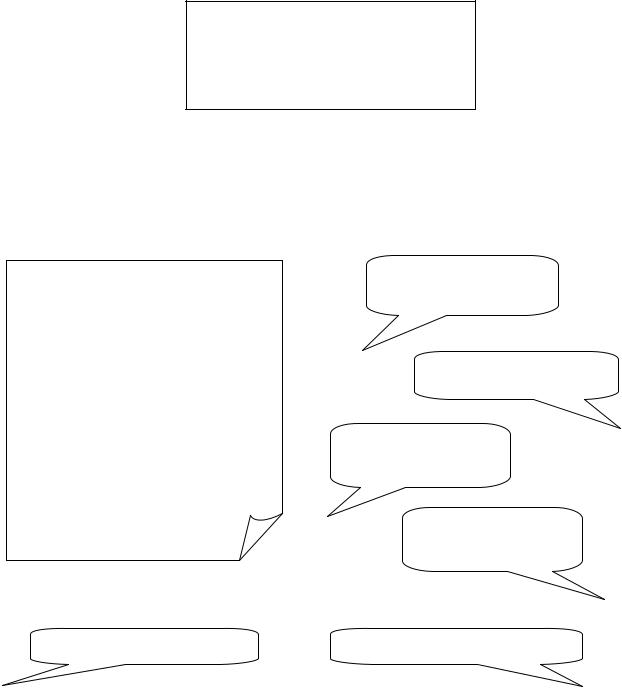
FOOD AND DRINK
like and would like
countable and uncountable nouns some / any many / much there is / are
Present and Future Simple
Lesson 1
1. Look at the list of food and drink. What do you like? What don’t you like?
Do you like … ?
fish |
vegetables |
fruit |
mushrooms |
chicken |
berries |
milk |
sweets |
chocolate |
biscuits |
cheese |
juice |
tea |
coffee |
eggs |
wine |
beer |
ice-cream |
2. What do your parents like?
My father likes …
I like fish, but I don’t like meat.
I really like coffee.
I don’t like milk very much.
I don’t like beer at all.
My mother likes …
3. Match the word combinations in the left column to their definitions in the right one.
1. |
frozen food |
a. contains only natural substances |
2. |
fresh food |
b. is stored and sold in cans |
3. |
tinned food |
c. is good for your health |
4. |
health food |
d. is packed and stored at very low temperatures |
5. |
nutritious food |
e. is recently picked or prepared |
7
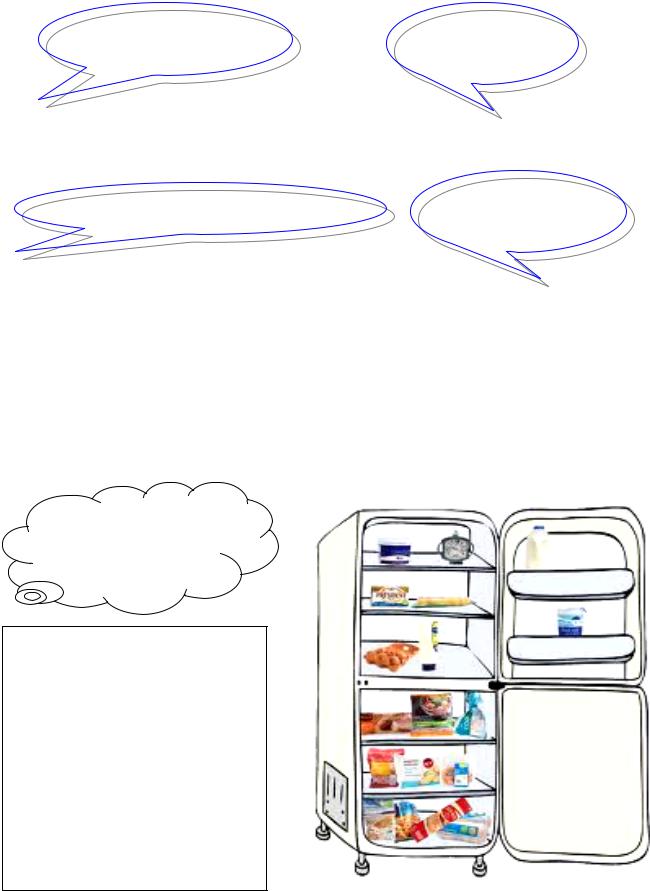
4. Ask your groupmates if they can buy the food in ex.3 at their local shop.
Can you buy … ? |
Yes, I can. |
|
(No, I can’t.) |
5. Which frozen foods does your local shop sell?
Does it sell frozen chicken? |
Yes, it does. |
|
(No, it doesn’t.) |
||
|
6.Which fresh foods does your local shop sell?
(vegetables, mushrooms, fruit, fish, berries)
7.Which tinned foods can you buy at your local shop? Can you buy tinned vegetables? (berries, fruit, fish, meat, mushrooms)
8.What is there in the fridge?
On the first shelf there is a … .
a tub of butter a pot of jam
a carton of orange juice a jar of pickles
a box of chocolates a tin of sweetcorn a can of beer
a bag of frozen vegetables a packet of biscuits
a tube of mayonnaise
8
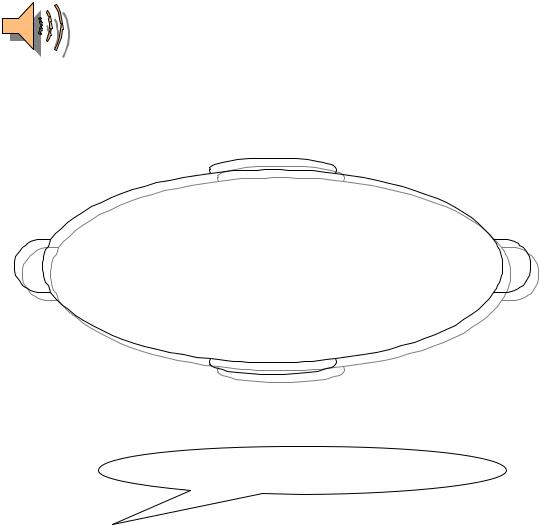
9.  Listen to two children talking about what they like. What things do they both like?
Listen to two children talking about what they like. What things do they both like?
10. Look at the list of words. Which ones are vegetables? Which ones are fruit? Which ones are berries?
potatoes, apples, cherries, strawberries, tomatoes, pears, oranges, raspberries, carrots, black currents, peaches, onions, cucumbers, cabbages
11. Which fruit, vegetables and berries does your mother process for the winter?
She processes … for the winter.
12. a) Put the words in ex.1 into two groups.
Things you can count (countable nouns) |
|
|
|||
● eggs |
● |
● |
● |
● |
● |
Things you can’t count (uncountable nouns) |
|
|
|||
● milk |
● |
● |
● |
● |
● |
● |
● |
● |
● |
● |
● |
b)Can countable nouns be plural?
13.


 Listen to the conversations.
Listen to the conversations.
a)A I’m thirsty.
B Would you like some tea? A No, thanks.
B Would you like some apple juice? A Oh, yes, please!
9
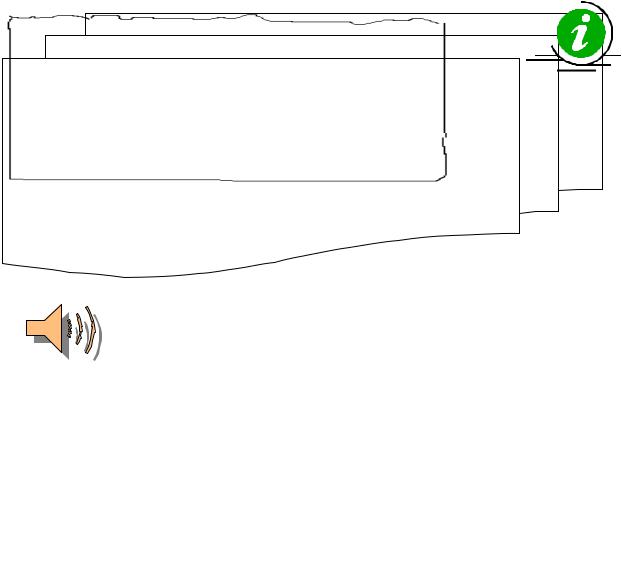
b)A I’m hungry. Is there anything to eat? B Would you like a biscuit?
A No, thanks. I’d like a sandwich. B Cheese? Ham?
A Cheese and ham, please!
14.What is the difference between the sentences in each pair?
I like sandwiches.
I’d like a sandwich, please.
Do you like apple juice?
Would you like some apple juice?
15. Practise the dialogues in ex.13. Make more dialogues with other foods and drinks.
We use some with plural and uncountable nouns. some bananas
some ice-cream
When we ask for things and offer things, we use some, not any, in the question.
Would you like some biscuits? Can I have some milk, please?
16. |
Listen to the conversation in a shop and look at the |
|
|
shopping list. Copy down what the man buys. Why |
|
|
doesn’t he buy the other things? |
|
|
Things to buy |
|
|
Orange juice |
Coffee |
|
Potatoes |
Apples |
|
Milk |
Bread |
|
Pizza |
Cheese |
10
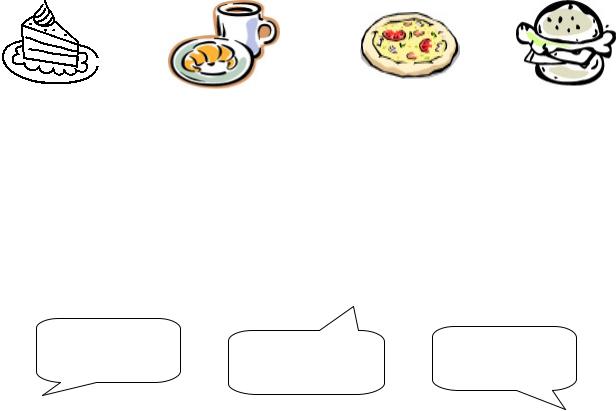
Lesson 2
1.Read about Sergey from Moscow and say what you usually have for breakfast. Is Sergey’s breakfast the same or different from yours?
Sergey lives in Moscow. He’s a student. He gets up early and goes to university by underground. In the morning he always has breakfast. For breakfast he usually has bread with butter and cold meat. Then he has black tea with lemon and lots of sugar. He never has tea with milk. He doesn’t like milk very much. And then he sometimes has a small cake or some biscuits to finish.
2.Write about your normal lunch and dinner.
3.Snack is food that you eat between meals (breakfast, lunch or dinner) or instead of a large meal, for instance, when you are at university and have a short break between your classes. Do you have snacks at university? What snacks do you have? You can use the pictures as a backup.
a piece of cake |
a |
cup of coffee |
a pizza |
a hamburger |
|
and a croissant |
|||||
|
|
|
|||
4.What’s your favourite food? What do you eat with it? When do you have it?
5.Read the ideas about healthy eating. Do you think they are true?
I think this is |
I think this is |
I’m not sure |
|
true. |
|||
false. |
about this. |
||
|
• It’s good not to eat breakfast.
11
•Fruit juice is good for health.
•Coffee and tea are bad for health.
•Vegetarian food is always healthy.
Now let’s see what doctors think of the ideas.
•It’s important to start the day with a good breakfast. It’s not good to begin work or study on an empty stomach. Without breakfast you often feel hungry later and spoil your appetite by eating biscuits or other junk food.
•Natural fruit juice is good for health, but it can be bad for teeth and people suffering from gastric diseases. So have some juice with your meal, but don’t drink any juice between meals. Try water instead.
•Don’t have more than two cups of coffee a day and don’t drink any coffee before you go to bed. Tea is generally good for people. Green tea is especially healthy.
•It’s important to eat some vegetables every day. We need the vitamins and minerals. But vegetarian dishes often contain a lot of cheese, oil and mayonnaise and these can be very fattening.
6.Do you know what and when British people eat? Do they eat a lot and often or do they eat rarely and little? Do they prefer eating at home or out?
7.Now read the text “Meals in Britain” and say whether the following statements are true or false.
A traditional English breakfast is a very big meal – sausages, bacon, eggs, tomatoes, mushrooms … . But nowadays many people just have cereal with milk and sugar, or toast with marmalade, jam, or honey. Marmalade and jam are not the same. Marmalade is made from oranges and jam is made from other fruit. The traditional breakfast drink is tea, which people have with milk. Some people have coffee but many visitors to Britain find it disgusting.
For many people lunch is a quick meal. In the cities there are a lot of sandwich bars. Pubs often serve good, cheap food, both hot and cold. Schoolchildren can have a hot meal at school, but many just take a snack from home.
12
